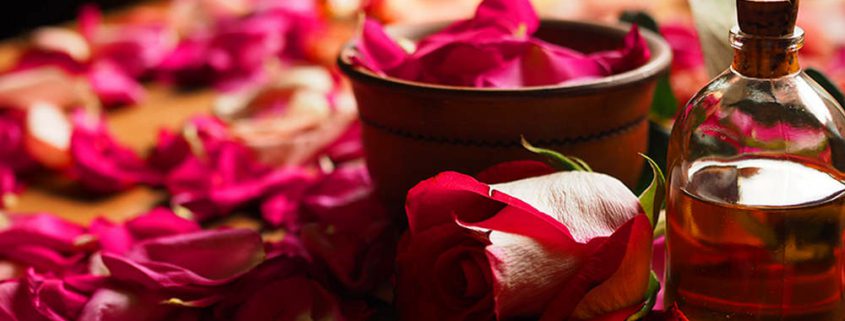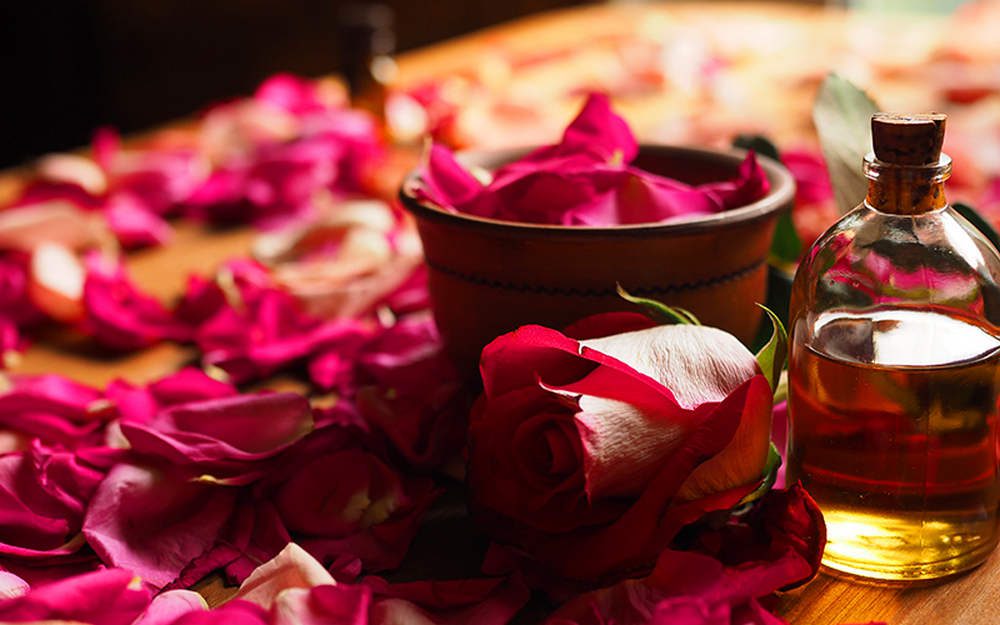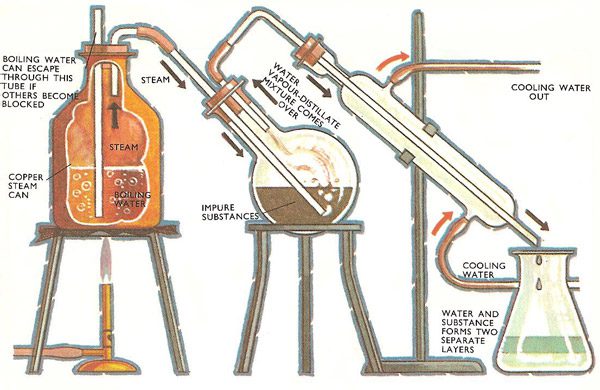How Rose Essential Oil is Made
Rose essential oil is a luxurious and highly sought-after product, cherished for its enchanting aroma and numerous therapeutic benefits. This article delves into the intricate process of creating rose essential oil, from harvesting the delicate petals to extracting the precious oil. Understanding these steps not only emphasizes the craftsmanship involved but also highlights the value of this exquisite product.
The History of Rose Essential Oil
Ancient Origins
Rose essential oil has a rich history that dates back thousands of years. Its use can be traced to ancient civilizations, including the Egyptians, Greeks, and Romans, who valued it for its fragrance and medicinal properties. The oil was often used in religious ceremonies, cosmetics, and as a natural remedy for various ailments.
Modern Applications
Today, rose essential oil continues to be revered for its versatile applications. It is widely used in aromatherapy, skincare, and perfumery. The production process has evolved over time, incorporating advanced techniques to ensure the highest quality of oil.
Cultivating Roses for Essential Oil Production
Selecting the Right Rose Varieties
Not all roses are suitable for essential oil production. The most commonly used varieties are Rosa damascena (Damask rose) and Rosa centifolia (Cabbage rose). These species are favored for their high oil content and superior fragrance.
Ideal Growing Conditions
Roses require specific growing conditions to flourish. They need well-drained soil, ample sunlight, and a moderate climate. The regions known for producing the finest rose essential oil include Bulgaria, Turkey, and Morocco, where the climate and soil conditions are optimal for rose cultivation.
Harvesting Rose Petals
Timing of the Harvest
The timing of the harvest is crucial in determining the quality of the essential oil. Roses are typically harvested in the early morning hours when the petals contain the highest concentration of aromatic compounds. The harvesting season usually spans from late spring to early summer.
Hand-picking the Petals
Harvesting rose petals is a labor-intensive process that requires great care to avoid damaging the delicate flowers. Skilled workers hand-pick the petals, ensuring that only the finest petals are selected for oil extraction.
Steam Distillation
The Process of Steam Distillation
Steam distillation is the most common and traditional method used to extract essential oils, including rose essential oil. This method is preferred for its ability to preserve the delicate aromatic compounds of the roses.
Step-by-Step Process:
-
Preparation of Raw Material:
- Freshly harvested rose petals are carefully selected and cleaned to remove debris or unwanted materials.
-
Loading the Still:
- The cleaned rose petals are placed in the still, a large container where the distillation process occurs.
-
Generation of Steam:
-
Passing Steam through Petals:
- As the steam passes through the rose petals, it heats them, causing the release of the essential oils. The heat breaks down the cell walls of the petals, allowing the aromatic compounds to evaporate.
-
Condensation:
- The steam carrying the essential oil vapor is then directed into a condenser. The condenser typically has coils that are cooled by water or air. As the steam cools, it reverts to liquid form.
-
Separation:
- The condensed mixture of water and essential oil is collected in a Florentine flask or separator. Due to the difference in specific weight, the essential oil floats on top of the water (hydrosol). The essential oil is carefully separated from the hydrosol and collected.
-
Purification:
- The collected essential oil is then filtered to remove any remaining impurities, ensuring high purity and quality.
Advantages of Steam Distillation:
- Preserves the Quality: Maintains the integrity of delicate aromatic compounds.
- No Chemical Residues: Produces a pure, natural product without chemical solvents.
- Widely Applicable: Suitable for most essential oils, including those from flowers, leaves, and stems.
Solvent Extraction
The Process of Solvent Extraction
Solvent extraction is another method used to produce rose essential oil, especially when the goal is to create a more concentrated product known as an absolute. This method involves using chemical solvents to extract the aromatic compounds from the petals.
Step-by-Step Process:
-
Preparation of Raw Material:
- Similar to steam distillation, fresh rose petals are harvested and cleaned thoroughly.
-
Immersion in Solvent:
- The rose petals are submerged in a solvent, typically hexane or ethanol. These solvents are effective at dissolving the essential oil and other aromatic compounds.
-
Formation of Concrete:
- After soaking, the solvent dissolves the essential oils, waxes, and other plant materials, forming a thick, fragrant substance called concrete.
-
Removal of Solvent:
- The solvent is then removed through evaporation, usually under reduced pressure, to leave behind the concrete. The concrete contains both the essential oils and other non-volatile plant compounds like waxes and pigments.
-
Production of Absolute:
- To obtain the absolute, the concrete is further processed by mixing it with ethanol. The mixture is chilled, causing the waxes to precipitate out. The remaining solution, which contains the aromatic compounds, is filtered to remove the waxes.
-
Final Evaporation:
- The ethanol is evaporated under low pressure, leaving behind the highly concentrated and pure rose absolute.
Advantages of Solvent Extraction:
- High Concentration: Produces a more concentrated product than steam distillation.
- Rich Aroma: Captures a wider range of aromatic compounds, resulting in a richer fragrance.
- Effective for Delicate Flowers: Useful for flowers with very delicate or low-yield oils.
Comparison and Conclusion
- Steam Distillation is ideal for producing pure essential oils without chemical residues, suitable for therapeutic and aromatic uses.
- Solvent Extraction results in rose absolute, which is more concentrated and has a richer aroma, making it preferred in high-end perfumery and cosmetics.
Each method has its own set of advantages and is chosen based on the desired end product and its intended use. Steam distillation is preferred for its purity and traditional approach, while solvent extraction is favored for its ability to produce highly aromatic and concentrated absolutes.
Quality Control and Purity Testing
Ensuring High Standards
Quality control is paramount in the production of rose essential oil. Producers conduct rigorous testing to ensure that the oil meets strict standards of purity and potency. Common tests include gas chromatography and mass spectrometry, which help identify and quantify the various chemical components of the oil.
Certifications and Authenticity
Reputable producers obtain certifications such as organic or fair trade to guarantee the authenticity and ethical production of their rose essential oil. These certifications provide consumers with confidence in the quality and sustainability of the product.
Benefits and Uses of Rose Essential Oil
Aromatherapy
Rose essential oil is widely used in aromatherapy for its calming and uplifting properties. It is believed to help reduce stress, anxiety, and depression, promoting a sense of well-being and relaxation.
Skincare
In skincare, rose essential oil is valued for its hydrating and anti-inflammatory properties. It is commonly used in facial oils, creams, and serums to soothe irritated skin, reduce redness, and promote a youthful complexion.
Perfumery
The enchanting fragrance of rose essential oil makes it a popular ingredient in high-end perfumes. Its rich, floral scent is both captivating and long-lasting, making it a staple in the fragrance industry.
Rose essential oil producing countries
When it comes to rose essential oil, Bulgaria, Turkey, and Morocco are all renowned for their high-quality production. However, determining which is the best depends on various factors including personal preference, intended use, and specific characteristics of the oil from each region.
Bulgaria
Bulgaria is often considered the top producer of rose essential oil, specifically from the Rosa Damascena variety. The region of Kazanlak, known as the “Valley of Roses,” offers ideal growing conditions with its rich soil and favorable climate. Bulgarian rose oil is highly esteemed for its rich, deep, and complex aroma. It is often described as having a more refined and sophisticated scent compared to oils from other regions. This makes it particularly popular in high-end perfumery and luxury skincare products.
Turkey
Turkey is another major player in the rose oil market, producing high-quality Rosa damascena essential oil primarily in the Isparta region. Turkish rose oil is known for its slightly lighter and more delicate fragrance compared to Bulgarian rose oil. It is highly valued in aromatherapy and cosmetic applications for its soothing and calming properties. Turkish rose oil tends to be more accessible in terms of availability, making it a popular choice for various applications.
Morocco
Morocco produces rose essential oil from the Rosa centifolia variety, which is also known as the cabbage rose. The Dades Valley, often referred to as the “Valley of the Roses,” is the primary region for rose cultivation in Morocco. Moroccan rose oil is characterized by its sweet, warm, and slightly honey-like fragrance. While it may not be as widely known or used as Bulgarian or Turkish rose oil, it is still highly prized for its unique scent profile and therapeutic benefits.
Which One is Best?
The “best” rose essential oil ultimately depends on individual needs and preferences:
- For Perfumery: Turkish and Bulgarian rose oil are often preferred for their rich and complex scent, making them ideal for luxury perfumes.
- For Aromatherapy: Turkish rose oil is highly regarded for its soothing and calming properties, making it an excellent choice for relaxation and emotional well-being.
- For Skincare: Both Bulgarian and Turkish rose oils are excellent, but some may prefer the slightly sweeter fragrance of Moroccan rose oil for cosmetic applications.
So, while all three regions produce exceptional rose essential oil, Bulgaria is often considered the leader in terms of fragrance complexity and overall quality. Turkey offers a delicate and accessible alternative, while Morocco provides a unique and sweet-scented option. The best choice will depend on your specific needs and preferences.
Conclusion
The production of rose essential oil is a meticulous and time-honored process that highlights the artistry and dedication of its producers. From cultivating the finest roses to carefully extracting and testing the oil, each step ensures that the final product is of the highest quality. Whether used in aromatherapy, skincare, or perfumery, rose essential oil continues to captivate and inspire, offering a timeless connection to nature’s beauty and healing power.


























Leave a Reply
Want to join the discussion?Feel free to contribute!